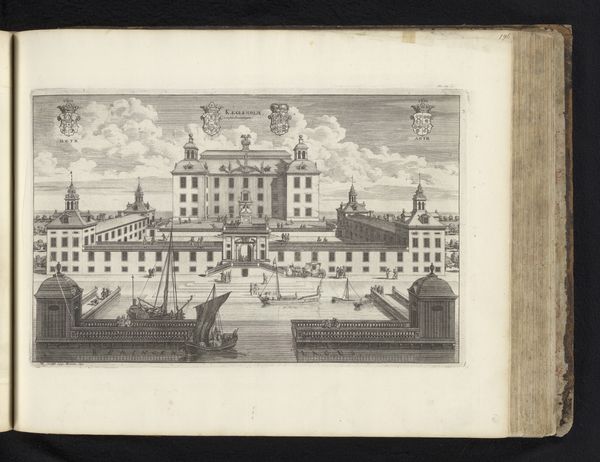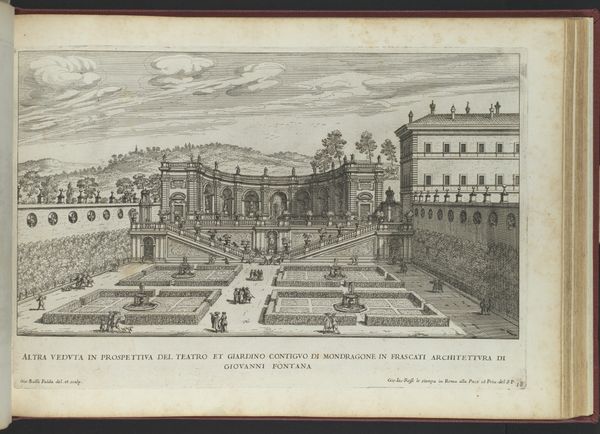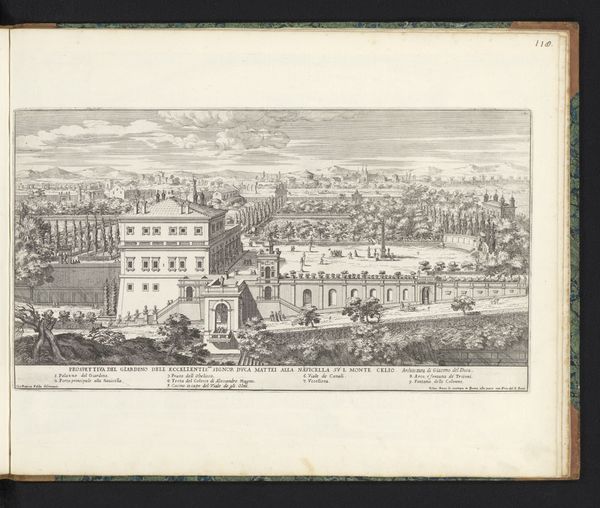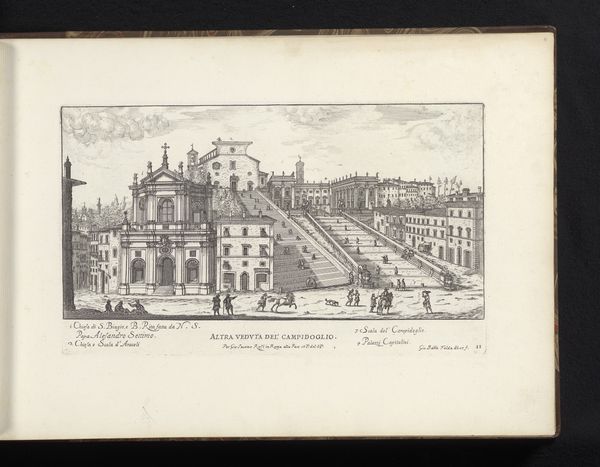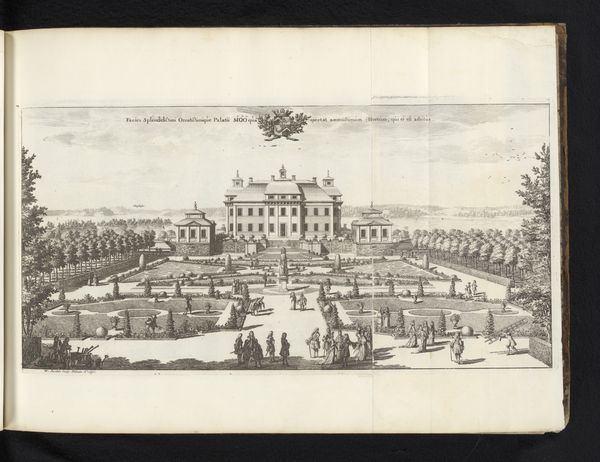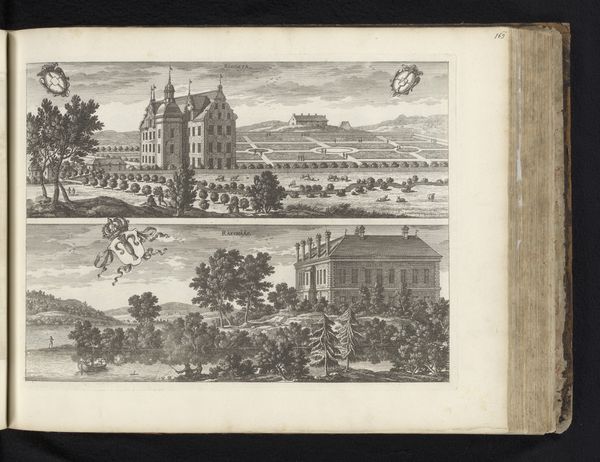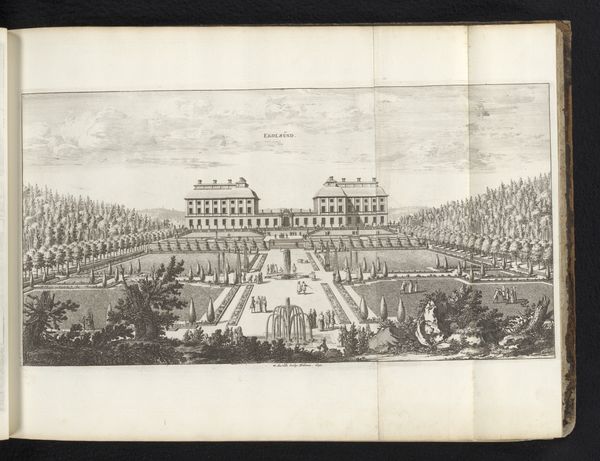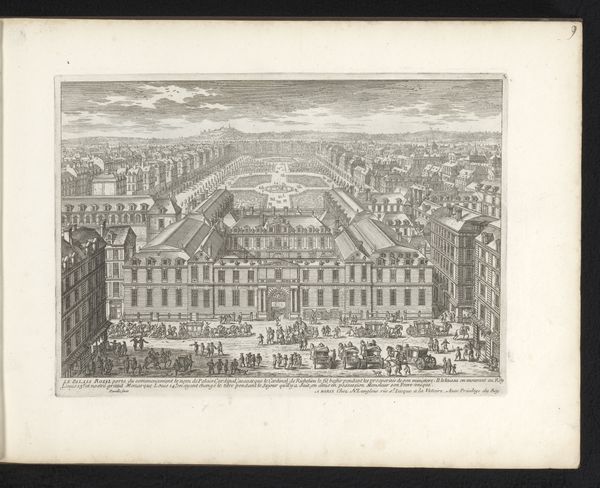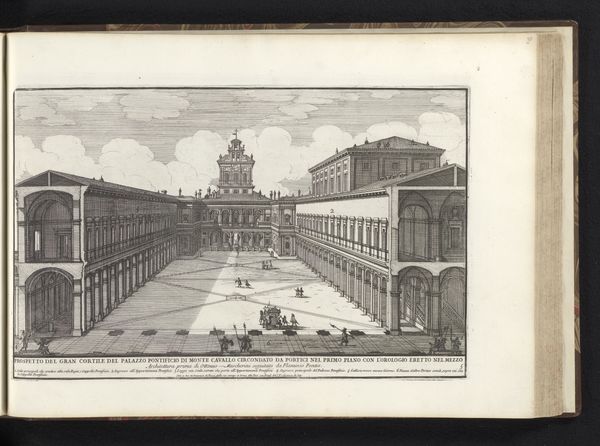
Gezicht op de Villa Doria Pamphilj en tuinen te Rome before 1683
0:00
0:00
giovannibattistafalda
Rijksmuseum
print, engraving, architecture
#
garden
#
baroque
# print
#
landscape
#
cityscape
#
engraving
#
architecture
Dimensions: height 236 mm, width 430 mm
Copyright: Rijks Museum: Open Domain
Curator: Before us, we have Giovanni Battista Falda’s "Gezicht op de Villa Doria Pamphilj en tuinen te Rome," a print created before 1683. It's currently held at the Rijksmuseum. Editor: What strikes me immediately is this calculated serenity. The almost geometric organization of the garden spaces, and that grand villa overlooking everything – it speaks of control and considered beauty. Curator: It’s an engraving, which dictates much about its aesthetic. Falda meticulously documents the layout of the Villa Doria Pamphilj. We should consider the labor involved in the printing process itself—the carving, the inking, the pressure... a real feat of manual reproduction intended for mass dissemination among elite circles. Editor: Yes, but also look at what's *in* the image. Water is clearly a motif; there are fountains integrated seamlessly, their symbolism points towards wealth and purity, but also constant renewal and the vitality of nature brought under domestic control. See how those elements reflect and enhance the architectural achievements! Curator: The architectural details – the precise rendering of the building's facade and ornamentation – speak to a clear client, of power wanting documentation. The print functions as both artwork and advertisement, showcasing the villa to potential buyers or imitators. Editor: Beyond commerce, Falda is capturing a moment. Those tiny figures strolling, the carriage approaching – they bring to life the aristocratic ideal of leisure. Notice, that even they reinforce visual symbolism because where they go, what they do reinforces established codes. This space isn't simply designed, but prescribed in its activities! Curator: Agreed! And considering it's a print, easily transportable, such views democratized elite taste. For those who couldn't physically visit the villa, they could still participate in its aesthetic and ideals through consuming the reproduction. Editor: Ultimately, Falda’s creation highlights an intersection of art and societal aspiration, offering enduring insight on the era's vision of refinement and societal hierarchy through visual cues we easily understand even today. Curator: Precisely. Through material analysis, we realize Falda's print facilitated the distribution of architectural and landscaping concepts beyond physical and social boundaries.
Comments
No comments
Be the first to comment and join the conversation on the ultimate creative platform.
